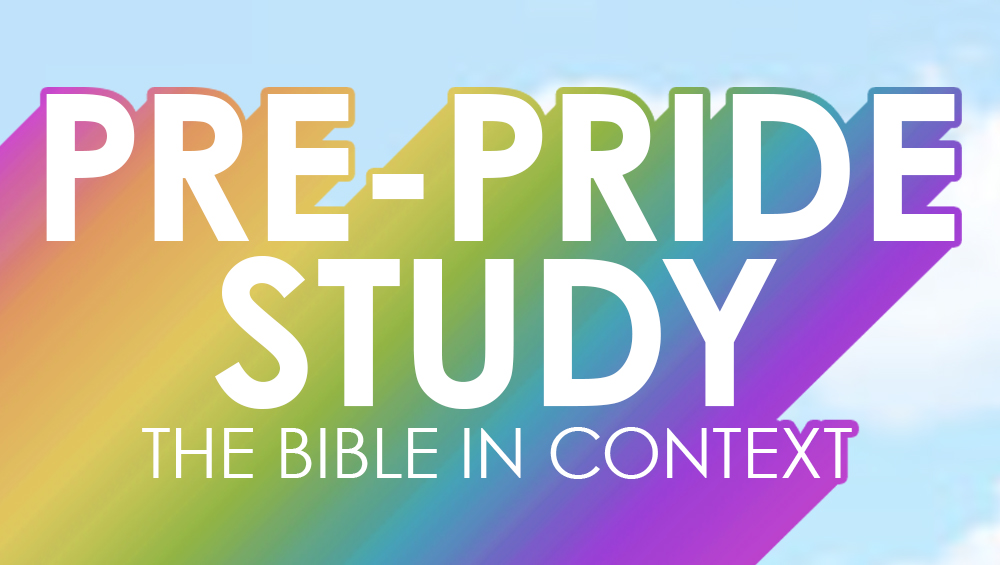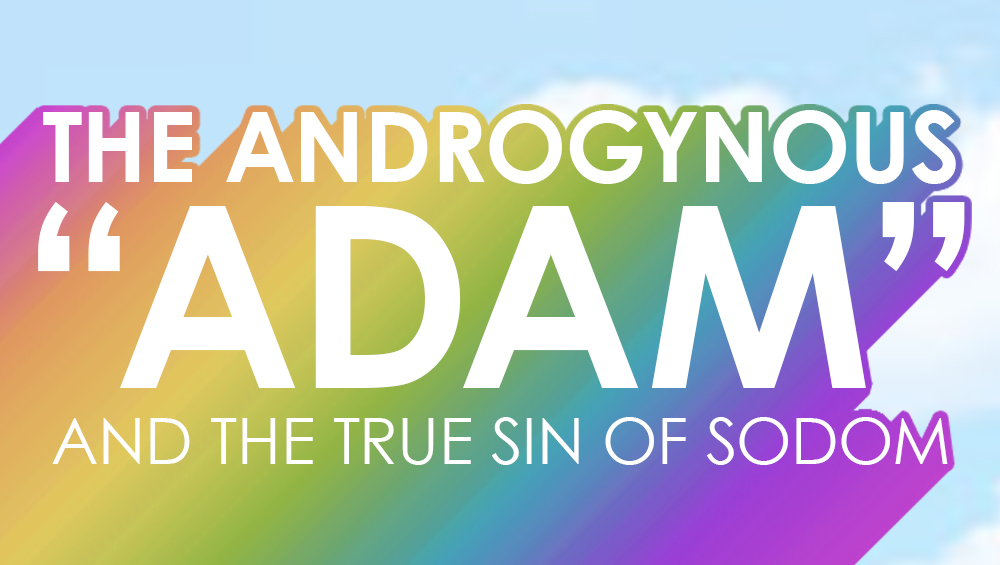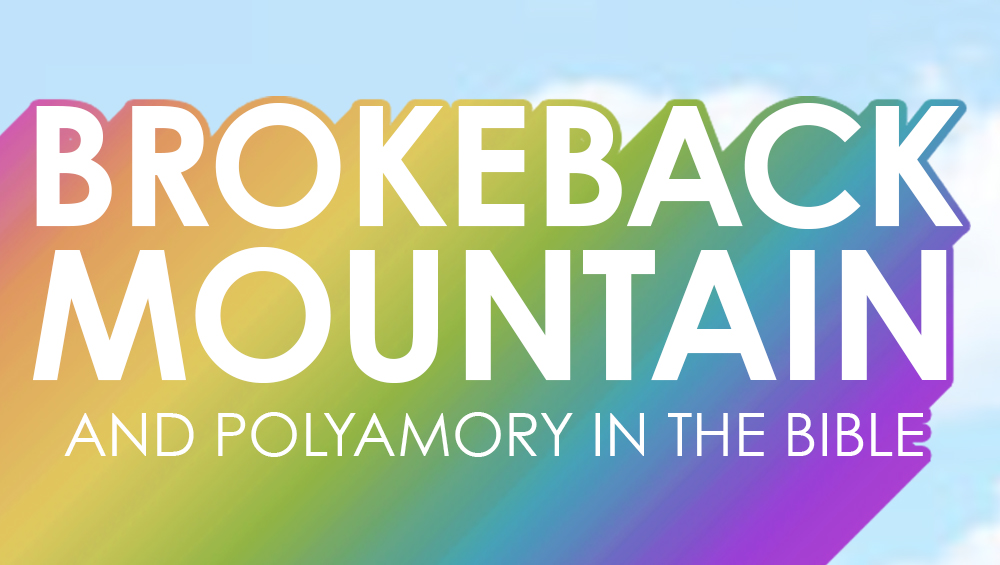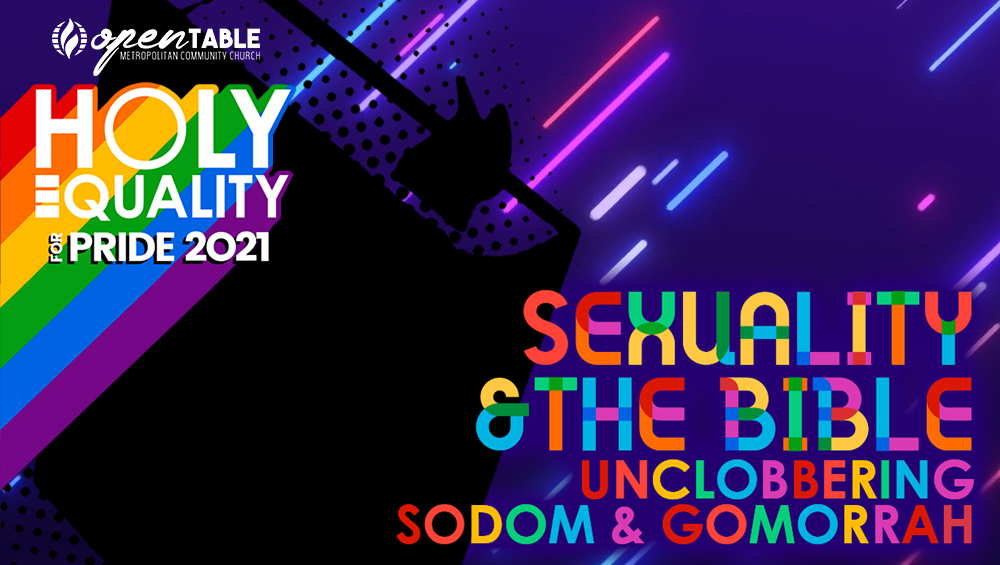So ang unang Topic for Pride Month is Bible in Context. I know many of you wish to emediately know and understand yung anim na supposedly ay anti-LGBT verses. Pero napaka-importante na malaman muna natin ang basehan at ang method paano ba dapat tignan ang mga verses na eto at ang iba pang verses na supposedly ay pro-LGBT. Well, I wont call them pro LGBT verses, but rather pro people verses.
So in this first session our objective is
Number 1: We must learn kung ano baa ng Bible at ano ba talaga ang sacred status nito? Saan ba nanggagaling ang Sacred status nito?
Number 2: Maintindihan natin bakit importanteng alam natin at nauunawaan ang kontexto ng bible at ng ibat ibang libro nito. Atin titignan ang isa sa mga context ng biblia, at yan ang Sexual context ng Ancient peoples.
Number 3: Pangatlo, malaman natin bukod sa Historical context, ang literary at textual critical method na pangalawang basic sap ag-analyze at pag-interpret ng bible.
Importante ang tatlong objective na yan dahil yan ang mga foundational basis sa mga susunod nating topic pag tinignan na natin ang ibat ibang verses sa bible na palaging ginagamit laban sa LGBT.
Punta muna tayo sa kwento. According to C.S. Song isang kilalang Asian Theologian – In the beginning were stories. Wala pang bible, wala pang theology, meron ng kwento at sa kwento nagsimula ang bible. Majority of the bible are about stories, whether they are myth-stories like the creation stories or parable stories, or gospel stories – These are all stories. Majority of the Bible are different types of stories. Syempre meron ding mga kanta sa Bible, primarily ang Psalms and the Song of Songs, merong Law and rules like Leviticus and merong letters – letters of Paul and it is also important to understand and be aware that aside from different types of stories, may iba pang literary types sa bible.
Pero sa kwetno muna tayo.
THEOLOGIZED HISTORY AND HISTORIZED THEOLOGY
Ancient peoples told stories about who they are and how they understood their identity as a people. They spoke and retold in various ways their origins and what their origins meant for them. According to Marcus Borg, a Greek Testament Scholar – stories comes from historical memories of the people and they wrote about their historical memories in metaphorical narratives. He said in one of his books, that ancient peoples told and wrote two kinds of stories: Metaphorize history, meaning it is a story based on a core historical memory. And they also wrote purely metaphorical stories which are stories important and valuable to them but does not necessarily mean that it really happened historically: for example, the creation story. Although, in my own opinion I would prefer to call Metaphorized History as Theologized History – isang kasaysayang hinubog, hinabi at sinulat na may spiritual at theological na mga elemento. O kaya naman what I also call as Historized Theology – Mga konseptong spiritual na hinabi sa isang kwento upang bigyan ng historical na credibilidad bagaman eto ay pawang kwento lamang.. For example, and kwento na si Jacob ay nakipag-wrestling sa isang Anghel ay pwedeng tignan in a scholarly way, bilang isang Historized Theology o pwedeng Theologized History or both. So ganito nagkwento ang mga sinaunang tao at and kwento na kanilang pinagpasa-pasa bilang oral tradition ay nahubog ayun sa context ng kanilang panahon – Ano ba ang political, kultural, relihiyon, economic at maski ang physical geography ng kanilang panahon at lugar.
HISTORICAL CONTEXT
Yun ang mga kwento ng oral tradition. Ngayon – Dumating ang panahon na ang Elite na class, ang monarchy ay gustong ipreserve ang mga kwentong mahalaga para sa kanilang lipunan at relihiyon. So nung ipinasulat ang mga kwentong nagpasa-pasa over the hundred of years sa old Tesament – eto ay sinulat nila sa kanilang Ancient na lengwahe. At nung sinulat nila eto, tulad nung eto ay kinekwento lang sa pamamagitan ng bibig, ang pagkasulat din sa kanila ay napapaloob at naka-ugat sa kontexto ng kanilang panahon at lipunan, kasama duon at intention ng nagsusulat at nagpapasulat.
That’s why the different books of the bible comes from a historical memory influenced and rooted (nakaugat) sa world view ng panahon na yun or sa kontexto ng panahon na yun. And when this historical memories which have passed on as Theologized Stories and concepts, they were also written with the influence of their context at the time that they were written.
Kaya naman sa pagbabasa ng Biblia or any other Ancient Scripture, Manuscript or Text, napaka-importante na alam natin ang historical context ng bible at ibat ibang books of the bible; which includes political, economic, cultural and geographic context. Sabi ni John Dominic Crossan isang Jesus Scholar – if you do bad history you will do bad theology. Importante na alam natin at may konsiderasyon tayo sa historical background ng ibat ibang libor ng biblia upang mas maunawaan ang ibat ibang kahulugan ng mga kwento at iba pang nakasulat rito. For example na lang – Sa mga Lord of the Rings Enthusiasts lalo na sa Libro ng LOTR – Nung super ka naamaze sa LOTR – gusto mo ding alamin yung history ng middle earth – yung back story para maunawaan mo bakit ganun ang mga nangyari sa kwneto ng LOTR. Nung nabasa mo na yun, ang gusto mo naman malaman ay sino ang Author, Sino si Tolkien bakit ang galling galling nyang sumulat ng kwento – Aalamin mo yung biography nya at sa pag alam mo ng biography nya malalaman mo saan sya tumira at lumaki, ano ang pamilya nya at ang kanyang education, anong political and historical events ang nawitness nya – and knowing them, mas naunawaan mo bakit ganun na lamang ang ibat ibang elements, symbols and story parts ng Lord of the Rings.
Maski Game of Thrones – Hindi ka solve na yung mismong GOT story lang – gusto mo din malaman ano ang background at ano ang events na nangyari nuon bago ang events ng GOT – next mong aalamin, bakit ba ganun na lang ka-violent ang GOT saan at ano ba inspiration nung Author – magsisimula kang mag-research about the kingdoms of the middle ages in Europe. Mas mauunawaan mo bakit ganun yung kwento ng GOT.
It is the same with the Bible. Importante alam natin ang mga bagay bagay BEHIND what is written in the biblical text. We need to understand the Biblical Context to appropriately draw out any message or interpretation from it and if our interpretation has any accuracy or basis from the original context of the Bible or on the other hand, why certain things in the bible are okay to be rejected because of the difference of context. Importante ang historical Context.
Examples
For example – some parts of Genesis and Exodus was written in year 900BCE by Yahwist scribes when finally the kingdom of David and Solomon was established and peaceful. Some parts of Exodus and Genesis were written after the kingdom of Solomon split into two: The Northern Kingdom of Israel and the southern Kingdon of Judah. There were parts of the story of Abraham that is theorized by scholars were written or edited by priests during the Babylonian exile. Leviticus and numbers were written by priests during the same exile in Babylon. Deuteronomy was a separate Law book written and found during the Jewish reformation of king Josiah of Judah. The book of the prophet Isaiah, a major prophetic book in the Bible, was written in 3 parts – the first few chapters were written by the actual prophet Isaiah before during the Babylonian Exile. The second part of Isaiah was written by the disciples of the prophet during exile in Babylon. The last part of Isaiah was written by 2nd generation disciples or scribes of Isaiah towards the end of Exile and upon returning to Judah after the exile. Yung mga events, sitwasyon, pangyayari at mga paniniwala ng mga tao sa panahon na sinulat ang isang libro o bahagi ng libro, yun ay bahagi ng mismong libro. Yung mga yun ay nakaimpluwensya sa pagbuo nung libro sa biblia. One of the glaring historical and socio-political context of Ancient peoples from the time of David and Solomon and prior to them up to the time of Jesus and the first Christians, is that the world they lived in is under a Feudal Empire that is unjust, oppressive and patriarchal. Nabuhay ang mga tao nuon sa ganitong uri ng lipunan, relihiyon at politika – nasa ilalim ng mapang-gapos na Imperyong Pyudal na Patriarchal.
Kaya sa Biblical Scholarship at sa mga progressive seminaries na nagtuturo ng critical scholarship ang unang una at pinaka-basic na critical method in biblical exegesis is called Historical-Material Criticism.
Importante na aware tayo na merong kontextong bumuo sa libro ng biblia at sa bible as a whole. Hindi bumagsak mula sa langit ang bible na ganire na written in English.
So nagegets natin? Nakakasunod? I hope so.
SEXUAL CONTEXT
Ngayon magkwentuhan Muna tayo sa kung ano baa ng historical context ng sex and sexuality sa Ancient world, especially sa Near East and Mediterranean region kung saan nabuhay ang early ancient people of Israel at ang early Christian communities.
Patriarchal –
– Economic Marriages
Pederasty –
Anal Rape –
There is so much more that we can talk about in terms of historical and cultural context of the bible and its different books but we stop for now and leave it as it is. Basta importante na may awareness tayo na may sariling historical context and world view ang ibat ibang libro sa bible at ang bible as a whole. Ang mga kontextong yun at world view ay mostly hiwalay at kaiba sa context at world view natin ngayon, although meron din pagkapareho dahil meron pa rin namang Imperyo sa ngayon. Anyway
LITERARY AND TEXTUAL CRITICISM
Ang pangalawang basic critical method of reading and interpreting the Bible and any other ancient text is called Literary and Textual Criticism.
Ang ibat ipang libor at kwento sa bible ay may ibat ibang literary types. At eto ay napag-aralan natin nung grade school at highschool at ang mga literary types na eto ay part din ng bible.
Sa loob ng bible merong poetry and songs or better yet, poetic songs tulad ng Psalms and Song of Songs. Sa Bible merong parable stories, merong epic stories, merong myth and hero stories. Merong Letters sa Greek Testament, yung 7 Authentic letters of Paul and other letters. Sa Bible merong Law and regulations tulad ng book of Leviticus, parts of Exodus and Deuteronomy. Merong prophetic prose. Merong wisdom sayings sa proverbs and Ecclesiastes. Ang poetic song is not meant to be law or regulation or even doctrine. A letter is intended for someone or a groupl particularly ang mga letters ni Paul are letters of response to its intended readers. A parable is not a factual story but it is a story that is based on real life that conveys a lesson, a message or a wisdom truth. A myth and a hero story are not factual historical events but they convey multiple layers of meanings to explain origins and how ancient peoples understood their relationship with creation, with God and with each other.
Unlike most preachers and pastors today, dapat careful tayo na nag-vovoltes five ng mga verses ng bible. Kukuha ng verse sa letters of Paul, kukuha ng verses sa Psalms at sa book of Amos, then iboboltes five ang tatlong verse kahit na magkakaiba ang context ng tatlo at magkakaiba ang literary intention nung tatlo. Im not saying it cannot be done, but there is a proper and careful way of reading and interpreting the bible in consideration sa kanyang context at sa kanyang literary type.
Textual Criticism naman means that we analyze or draw out the meaning of the text within the text. Madaming pastor, ginawang chop chop lady ang bible at ang books of the bible. Kukuha ng 1 or dalwa o tatlong verse and may eeexplain na at mag-iinterpret na bases sa isa or dalwang verse. Misinterpretation din yan. To be able to understand a meaning of a verse is to understand the whole chapter where the verse is contained and also to understand the whole book from where the verse and chapter comes from. Kailangan binabasa din ang kabuuan ng chapter at ng libro para maunaawan ng mabuti ano ang kahulugan ng iisa o dalwang verse. Pag magbabasa ng isang verse or chapter, dapat pati yung chapter before and chapter after ay binabasa din – para Makita at maunawaan natin ano ba talaga ang gusto sabihin nung nagsulat. Hindi pwedeng chop chop interpretation.
So far natutunan na natin importante ang context ng ibat ibang libro ng biblia. Nalaman din natin ang sexual context nung ancient times na Lalake lamang ang may sexual agency nuon at ang Anal Rape ay hindi dahil homosexual yung lalakeng nangrarape ng kapwa lalake. At yung lalakeng nirarape ay hindi rin necessarily homosexual. Many homo-erotic practices before are also temple prostitution of both male and female slaves to worship and to gain favor from fertility gods and goddesses.
Now we also took a few minutes to understand the 2nd Basic critical method of exegesis and interpretation and that is the Literary and Textual Criticism. Hindi lang historical context, bagkus importante din na alam natin ang literary type nung part ng bible na binabasa natin at importante din na binabasa natin sa kabuuan ng chapter at ng libro yung verse na gusto nating interpret at pagmunimunihan.
Given the historical and cultural context. Given the Literary and textual criticism of the biblical text – Panno ba natin dapat tignan at iregard ang Bible bilang Christiano sa Modern context of technology, reason and science?
THE BIBLE IS:
Sa part na eto aking irereference mostly si Marcus Borg, isang New Testament Scholar mula sa libro nyan How to Ready the Bible again for the first time.
The books of the bible are human products of its time. They are stories of the Ancient people of Israel who spoke and wrote how they experienced God in their life as a people. The early Christians told and retold their experience of Jesus of Nazareth as the Christ and later on, 40 years after, someone wrote the first gospel – wrote the Jesus story within the context of their current community. Later, the 2nd and 3rd gospels were written 50 to 60 years after the historical Jesus and wrote the Jesus story within the context and beliefs of each of their communities.
The Bible and its different books are human responses to an experience of God in the lives of the people and communities. The bible and its different books are words ABOUT God in the words of men.
According to Marcus Borg, the sacred authority of the bible is not based on its origin but rather on its status as a primary conversational partner for us Christians today.
The Sacred status of the bible is in its status as a Sacrament in and of itself – As it continues to be a channel of God’s grace and love despite its human context.
My professor in New Testament, Revelation Velunta also said that the sacred status and authority of scripture is also based on the countless lives of scholars, translators, scribes, archaeologists, linguists and anthropologists, including all other persons in the last 2000 years, who made it possible for us to hold and read a bible today, which according to him is in of itself – a miracle.
The Sacred Status of the Bible, despite many parts of it being oppressive of women, endorsing slavery and racial segregation, genocide and stories of terror – also has its transcendent thematics – stories, ethics and principles of and about justice and redemption, common good and community, kindness and compassion, hope and perseverance, sacrifice and love.
———-
In this session of our Pride Month series of Homosexuality is not a Sin: As progressive Christian, we are not here to debunk and destroy the sacredness of the bible. Far from it, a better understanding and a better method of reading the bible helps us to appreciate the stories, symbols and unexhaustible – hindi mauubos na ibat ibang kahulugan ng Bible. When we approach the bible in a more serious, critical and conversational way, the Bible becomes a living conversational and spiritual tool. When you take it literally and consequently impose upon it your modern consciousness – the Bible becomes a dead piece of weight that has limited relevance and meaning. A literal and inerrant approach to scripture makes Jesus a dead person and a dead story in the past known only from a ancient book.
But if we accept the totality of the bible as both human made and divinely inspired – then it becomes richer, more vibrant and more alive. Nafofocus lang tayo sa Divine nature ng Bible at ang pagkaintindi pa natin sa Divine nature nya eh problematic. Yet when we balance it and look at what scholars for the last 200 to 300 years have done and studied about the bible. When we employ the same critical methods of the scholars – the Bible as human made and divinely inspired will continue to give fresh perspectives on life and spirituality, and will challenge us and push us to the living bodies of Christ today.
I end this topic with what I have quoted earlier from the Jesus Scholar John Dominic Crossan, a former Roman Catholic monk, turned archaeologist and Historical Jesus Scholar –
If you do bad history, you’ll do bad theology.
Podcast: Play in new window | Download
Subscribe: Apple Podcasts | Spotify | RSS



